Does rinsing the wound with saline really work?
Treating and washing the wound with physiological saline can help minimize the infection caused by bacteria that have been eliminated. Not only that, this solution is also quite effective when flying away pollutants that cause allergic rhinitis and sinusitis. Join Dr.Muoi to learn more information and how to use the product effectively!
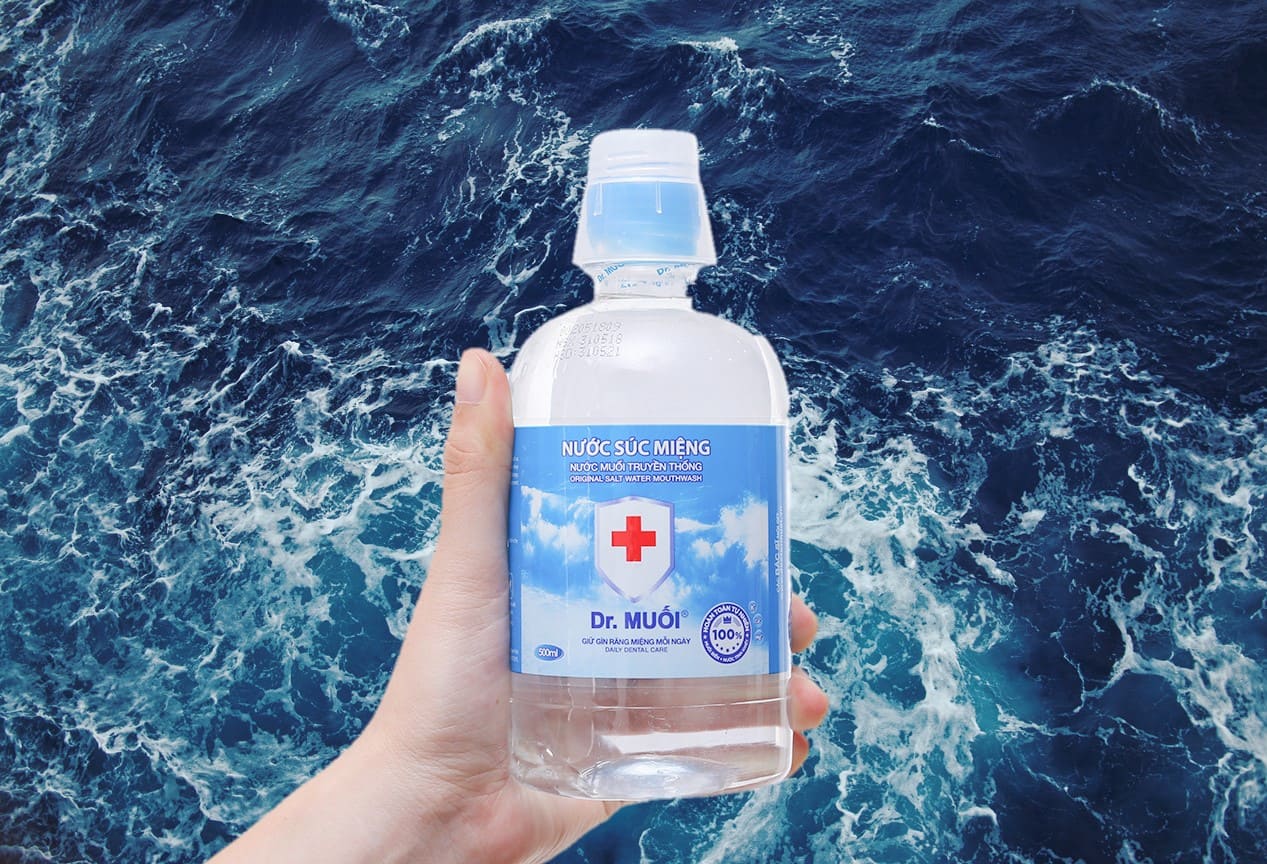
1. What is physiological saline?
According to the scientific designation, physiological saline is an isotonic solution of sodium chloride, prepared at the rate of 0.9% and has an osmotic pressure equivalent to the fluid in our body.
0.9% NaCl solution is not a prescription drug and is quite safe, so it is widely used in life and medicine. We can completely use this product for many objects including children, pregnant women and babies.
Basically, physiological saline will be divided into 2 types:
Type 1: Used to clean skin wounds, eye drops, clean nasal cavity, ear cavity, gargle – throat, …
Type 2: Prepared in a solution for intravenous infusion in the body (also known as sea water). Unlike physiological saline for external use, physiological saline in seawater is distilled, prepared and preserved in a completely sterile environment. When used, sea water will be injected intravenously by drip with the volume prescribed by the doctor.
2. Is disinfecting an open wound with saline enough to clean it?
“Is physiological saline to wash the wound effective?” is the question that Dr.Mui received a lot. Maybe because the price of this product is quite cheap and looks very ordinary, but don’t be in a hurry to underestimate this useful solution!
2.1. Why is physiological saline used to disinfect open wounds?
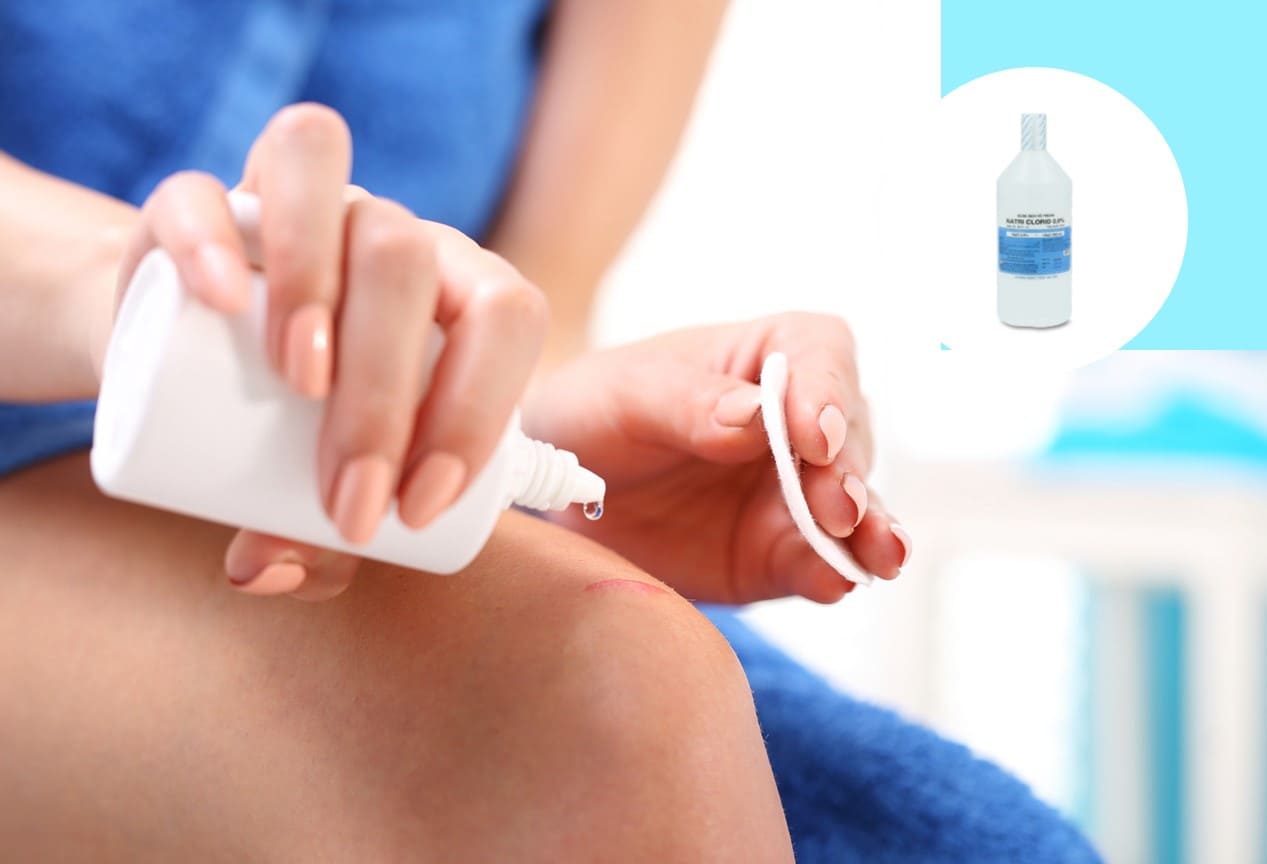 NaCl 0.9% can disinfect, clean the wound gently, without causing pain.
NaCl 0.9% can disinfect, clean the wound gently, without causing pain.
The most important effect of 0.9% NaCl solution is to clean the wound. Accordingly, its salt concentration is very low, so it is not as painful as specialized antiseptics. Normally, you can completely pour physiological saline directly on the bleeding area to wash away dirt, blood, … and then proceed with the next first aid treatment steps.
So in fact, washing the wound often with physiological saline has the effect of supporting first aid, cleaning rather than disinfecting. Usually the doctor will use an antiseptic after using saline to wash the wound. But in some non-serious cases, the use of additional antiseptics is not really necessary.
2.2. Consequences of an open wound infection
 Open wounds, if not handled properly, will cause dangerous blood infections.
Open wounds, if not handled properly, will cause dangerous blood infections.
Complications from an open wound infection can range from the site of the injury to the entire body. Accordingly, the phenomenon of long-healing wounds leading to non-healing ulcers is the most dangerous local complication of open wounds. What’s worse is that it will cause a lot of pain to the patient, which will have a negative psychological effect in the long run.
Particularly, systemic complications are a particularly serious case. It can lead to bone infection, bone marrow infection (osteomyelitis), skin infection, and bacterial infection under the skin (cell tissue). Worse, a blood infection leads to bacteria entering and causing systemic inflammation.
3. How to wash the wound with salt water?
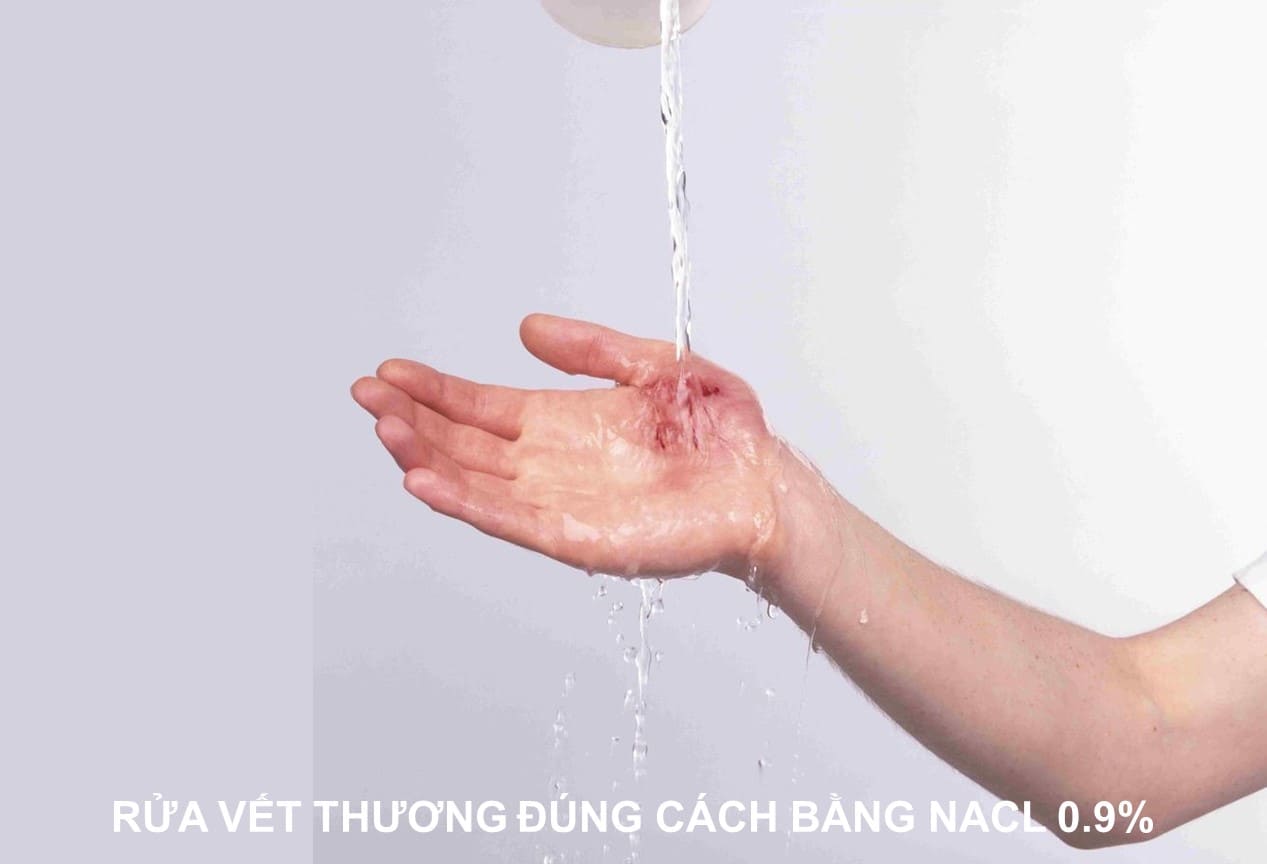 Washing the wound with physiological saline helps reduce the risk of infection
Washing the wound with physiological saline helps reduce the risk of infection
As we mentioned, although for large open wounds, 0.9% NaCl solution cannot completely disinfect but is still effective at removing dirt around and on the wound surface. So physiological saline is considered an effective first aid solution before using specific antiseptics.
However, to achieve the best effect, you need to wash the wound with physiological saline properly!
Step 1: Prepare sterile clean gauze and 0.9% NaCl solution
Step 2: Fix the area with open wound on a flat surface. Next, we remove foreign bodies, dust, blood by pouring 0.9% NaCl saline directly on the injured skin. Usually, we will pour in the direction from the inside to the outside to achieve the best effect.
Step 3: Combine specific antiseptic for open wounds, deep wounds that bleed a lot. For mild cases, just physiological saline is enough.
Step 4: Use previously prepared antiseptic gauze to dry, bandage if necessary.
4. Mix salt water properly so that the wound is washed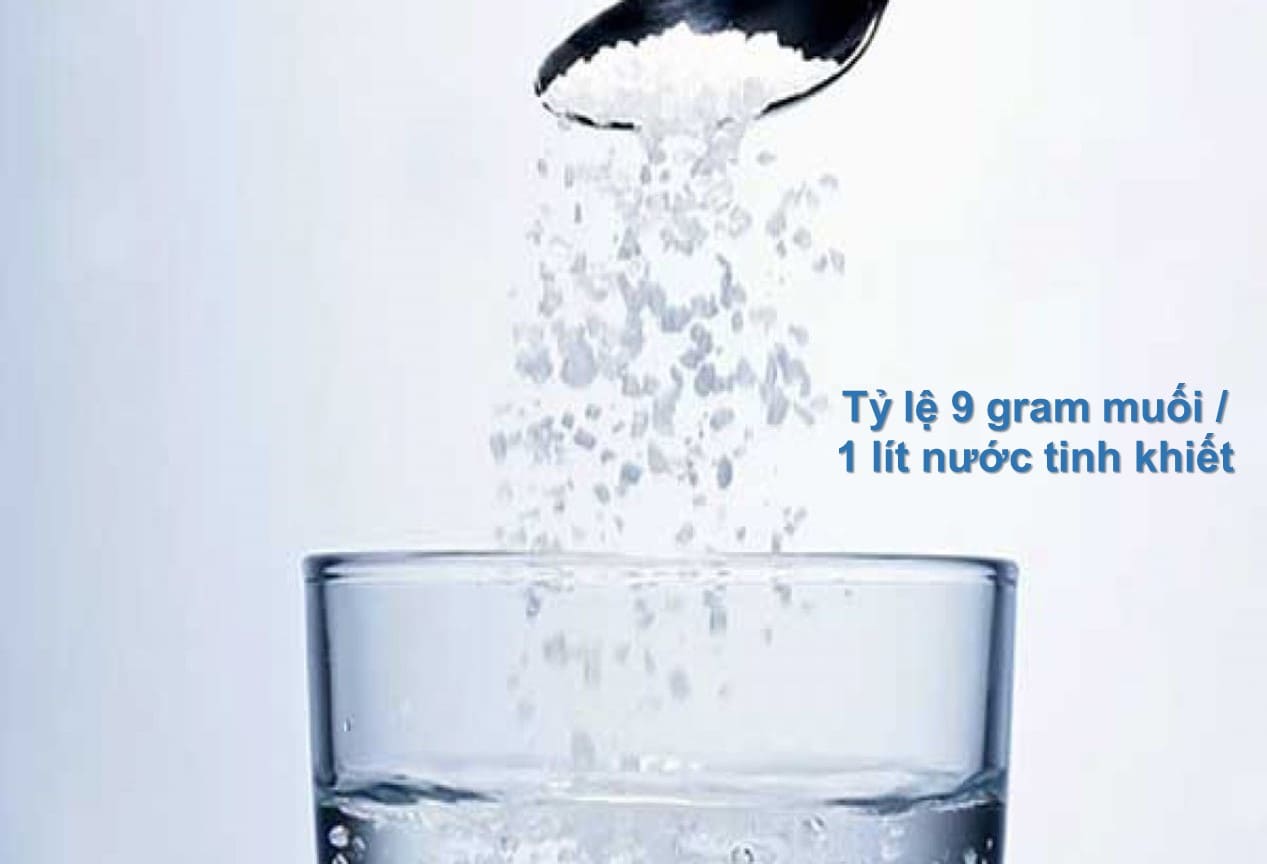 Diluted saline with a concentration of 0.9% will be safe for users.
Diluted saline with a concentration of 0.9% will be safe for users.
Another question that Dr. Salt is also very often received as: “should I wash the wound with salt water?”. And the answer is YES, but provided that the water – salt mixture must be mixed with the correct concentration of 0.9%. That is, about 1 liter of pure water will need 9 grams of NaCl (salt) respectively.
Although it is a bit complicated, but in case it is not possible to buy specialized physiological saline, you can completely perform the following steps to bring the concentration of saline solution to approximately 0.9%:
Step 1: Disinfect! You must make sure that all preparation equipment (usually bottles, measuring cups, spoons, etc.) is clean and uncontaminated. Also, don’t forget to wash your hands before you start.
Step 2: Prepare the concoction, water and salt. Note that you should only use purified water (or preferably distilled water), pure salt (available in supermarkets) to ensure sterility and safety when used..
Step 3: Mix the brine solution with the ratio of 9 grams of salt to 1 liter of pure water. To ensure accuracy, you can use measuring cylinders and electronic scales to measure. Use a spoon to stir this solution until the salt is completely dissolved.
Step 4: Store and use properly. Once mixed, you can completely use it immediately. However, if not used up, you should store this 0.9% diluted saline solution in sterilized containers with lids for 7 to 15 days.
Although it is not difficult to do, it is quite time consuming for the preparation, sterilization and purchase of pure ingredients. The simplest way is to order the pre-prepared Dr.Muoi Salt water product. Click buy now:Nước súc miệng Dr.Muối Truyền Thống – 100 ml
5. Notes on using physiological saline
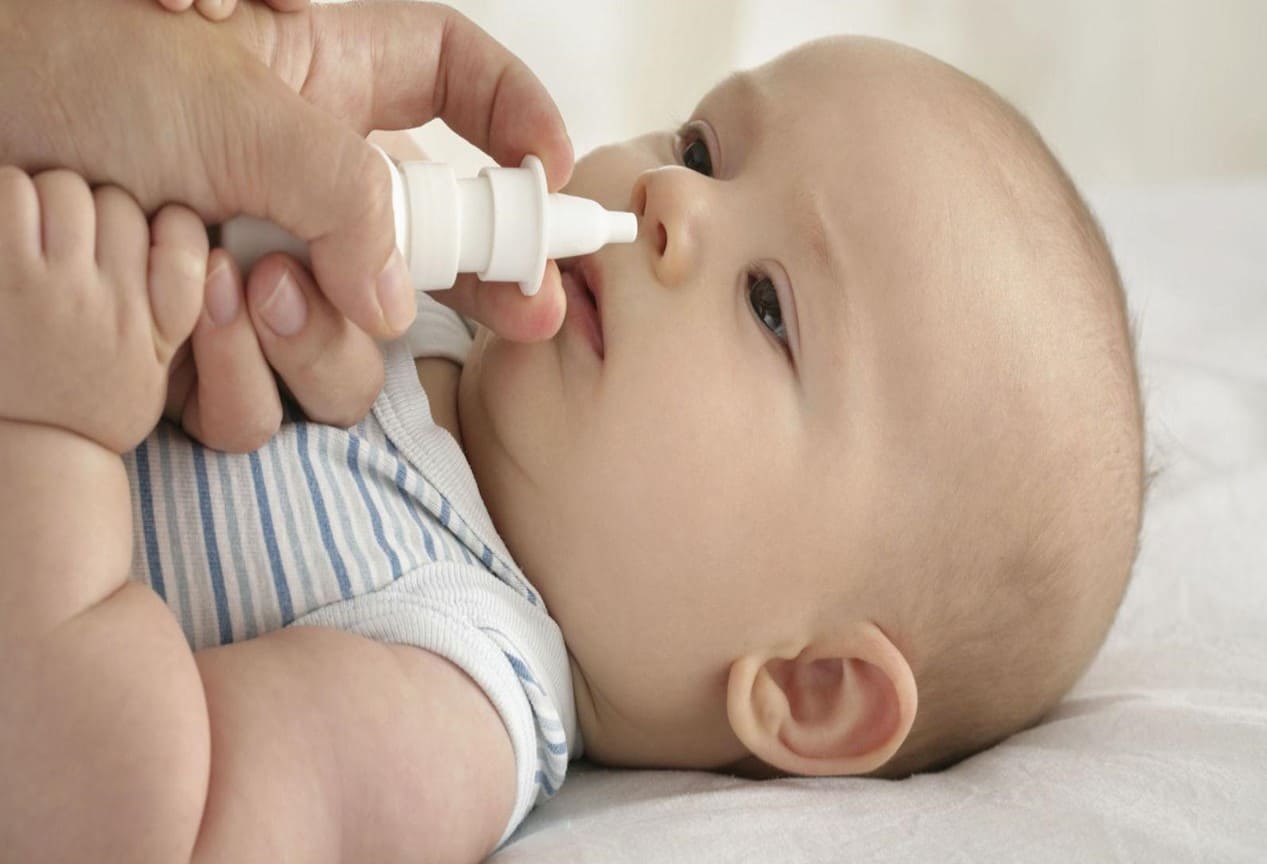 Use physiological saline with the right type and right object.
Use physiological saline with the right type and right object.
As can be seen, 0.9% NaCl solution is quite benign when it can be used topically for both children and infants. However, you should not abuse and absolutely use according to the instructions. If you are unsure about how to use it, you should consult a qualified doctor to ensure safety, especially for infants.
Hopefully through this article, Dr. Salt has helped you understand better and know how to properly wash the wound with physiological salin
You Can Refer To More Articles:
Should I wash my nose with physiological saline?
Instructions for Self-healing Sinusitis with Physiological Salt Water
Tips for Treating Allergic Rhinitis with Physiological Salt Water Simple and Effective
Instructions on how to hydrate with salt water to treat bad breath
